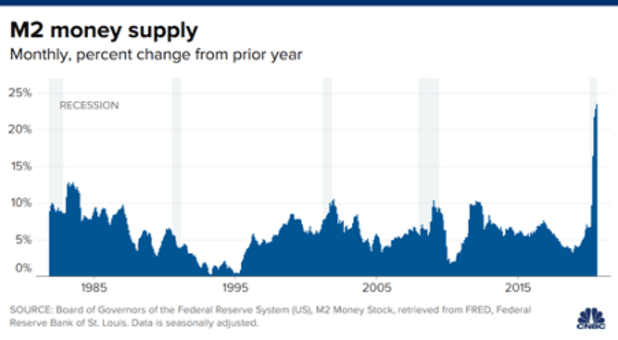Bitcoin Is A Mature Asset
Bitcoiners have to endure a lot of criticism from those who are still skeptical of the digital asset. A lot of the time, this skepticism comes from misunderstandings about the true nature of what the network is capable of. Headlines like “Bitcoin Was Hacked,” “Bitcoin Is Used By Criminals,” and “Bitcoin Is Bad For The Environment” are examples of the common misunderstandings that Bitcoiners have to disprove to their colleagues, friends and family whenever the topic comes up.
One such argument that may be difficult to counter is the fact that bitcoin is a very young asset. It was introduced just 11 years ago and many naysayers dismiss Bitcoin altogether because they see it as a new experiment or fad that will die out, like MySpace or Beanie Babies. But what if there is a very sound counterpoint that may convince the cynics that bitcoin is indeed on its way to becoming a true, tested and mature asset?
Historic Market Hours And Other Factors To Consider
We can think about the maturity of an asset through the lens of the hours it has been publicly traded, as opposed to the number of years it has existed on the market.
Let’s take the beloved S&P 500 for example. First, we need to consider the date it began trading and how many days out of the year it usually trades for. The S&P 500 was founded on March 4, 1957, while trading hours occurred only on Mondays through Fridays from 10:00 a.m. to 3:30 p.m. and are closed on holidays.
This would equate to 5.5 hours of trading on a normal business day with 252 total trading days in a year. However, we cannot calculate the number of hours until we address how market hours have been changed over the course of history.
It wasn’t until October 1974 that the exchanges began operating from 10:00 a.m. to 4:00 p.m., which would allow markets to trade for six hours on regular business days. And then again, in 1984, the market hours were switched to the current times of 9:30 a.m. to 4:00 p.m., which would allot 6.5 hours per trading day.
Types Of Days That Are Excluded
Leap Year days, half days (this depends upon which day of the week certain holidays occur), closings due to catastrophic events (such as September 11, 2001 and the spread of COVID-19) are not factored into our calculations.
Something to keep in mind when discussing the benefits of bitcoin as compared to equity markets is the year-round, 24/7 availability to trade the digital asset. If you have access to a bitcoin exchange, you are able to buy and sell your bitcoin whenever it is convenient. Trade halts in the middle of the day do not keep bitcoin from being traded. Even if all of the bitcoin exchanges in your area were to close up shop, you would still have access to trade through peer-to-peer exchanges. There is always someone around the world willing to trade bitcoin. In contrast, trading stocks requires a broker and specific hours of operation.
The last thing to mention is the Cowles Index, created by Alfred Cowles, who was an economist and founder of the Cowles Commission. In 1938, Cowles felt it necessary to track the performance of the average investor with a stock market index. We will not include the trading hours of the Cowles Index in our calculations, but felt it necessary to mention because it is the predecessor of the S&P 500.
With all of this in mind, we may now calculate a rough estimate of the number of hours for which the S&P 500 has allowed trading since its official inception in 1957. We will then compare the trading time of the index with bitcoin’s trading time.
Calculating the S&P 500’s Total Market Hours Vs. Bitcoin’s
The span between March 4, 1957 to September 30, 1974 equals 4,449 workdays. Multiply 4,449 workdays by 5.5 hours per day and we get 24,469.5 hours.
The span from October 1, 1974 to December 30, 1983 would equal 2,321 workdays. Multiply 2,321 workdays by 6 hours and we get 13,926 hours.
The span from January 2, 1984 to October 30, 2020 would equal 9,207 workdays. Multiply 9,207 workdays by 6.5 hours and we get 59,845.5 hours.
If we add all of those hours up together, then we get a total of 98,241 trading hours for the S&P 500 throughout its history (which does not factor in half days or closings due to catastrophic events, as noted above).
Now, let’s apply that same math to Bitcoin.
Bitcoin’s network was launched in January 2009 but did not start experiencing price discovery until it was traded on BitcoinMarket.com (no longer in operation) on March 17, 2010. Bitcoin trades 24/7 every day of the year, so the calculations are a lot easier to determine. The number of days from March 17, 2010 to October 30, 2020 (we will use the same end date as we do for the S&P 500) gives us 3,881 days. We can multiply the total days by 24 (hours in a day) to get 93,144 total hours of trading time for bitcoin.
This would project Bitcoin to overtake the S&P 500’s trading hours by July 18, 2021. Bitcoin will have more trading hours than one of the most highly-respected indexes of all time in a little over a year after it’s third subsidy halving. We can also apply this type of math to other markets as well and project when Bitcoin will overtake the amount of hours for which each of these markets have traded.
Stealth Date Calculations
“Stealth dates” are the nearest projected dates that Bitcoin overtakes the amount of trading hours for any particular market. For this exercise, trading hours are calculated from the date of each market’s inception up to the date of October 30, 2020.
Please note that we are also not calculating the number of hours during which futures are traded and are not including after-hours trading.
All listed dates are projections and are not entirely accurate because we are not taking into account leap years, half days that occur throughout the year, catastrophic events or other unique circumstances.
Bitcoin (BTC)
- Year founded: 2009 (price discovery began in 2010)
- Total trading hours: 93,144 hours
DOW Jones Industrial Average (DJIA)
- Year founded: May 26, 1896
- Total trading hours: 182,127.5
- Stealth date: April 25, 2033*
- Total hours until stealth date: 109,440
- Stealth date completion percentage: 46%
S&P 500 (^GSPC)
- Year founded: March 4, 1957
- Total trading hours: 98,241
- Stealth date: July 18, 2021**
- Total hours until stealth date: 6,264
- Stealth date completion percentage: 93%
NYSE Composite (^NYA)
- Year founded: December 31, 1965
- Total trading hours: 80,272.5
- Stealth date: April 16, 2019
- Total hours until stealth date: -12,871.5
- Stealth date completion percentage: 116%
NASDAQ Composite (^IXIC)
- Year founded: February 5, 1971
- Total trading hours: 78,677.5
- Stealth date: March 8, 2019
- Total hours until stealth date: -14,466.5
- Stealth date completion percentage: 118%
Wilshire 5000 Total Market Index (^W5000)
- Year founded: 1974
- Total trading hours: 74,662.5
- Stealth date: September 21, 2018
- Total hours until stealth date: -18,481.5
- Stealth date completion percentage: 124%
There is, of course, the argument that volume has a huge effect on the maturity of an asset and this is true. Bitcoin’s volume will need to increase and be verified through better methods before it is able to truly become a mature asset. In many ways bitcoin is still discovering how and where it fits within our world. But knowing that bitcoin, at the time of this writing, has traded around 93 percent of the same hours as the S&P 500 has traded within its lifetime, allows everyone inside and outside of the Bitcoin space to reconsider how far along we really are. At the very least, skeptics will be hard-pressed to find a rebuttal against these numbers.
Special thanks to @BitcoinTina and my sister Peri for helping me complete this piece.
Calculating Projected Stealth Dates:
*Calculating the projected stealth date for the DOW Jones Industrial Average:
8,760 = Number of hours in the year
93,144 = Total number of hours bitcoin has traded since inception
1,638 = Trading hours for equity markets per year (9:30 a.m. to 4:00 p.m. on weekdays excluding holidays)
182,127.5 = Total number of hours the DOW has traded since inception
We will now solve for x:
8,760x + 93,144 = 1,638x + 182,127.5
-93,144. -93,144
8760x = 1,638x + 88,983.5
-1,638x -1,638x
7,122x = 88,983.5
/7,122 /7,122
x = 12.494
Convert to days
12.494 * 365 = 4,560.31
Next step would be to add 4,560 days to October 30, 2020 which would equal April 25, 2033.
**Calculating the projected stealth date for the S&P 500:
8,760 = Number of hours in the year
93,144 = Total number of hours bitcoin has traded since inception
1,638 = Trading hours for equity markets per year (9:30 a.m. to 4:00 p.m. on weekdays excluding holidays)
98,241 = Total number of hours the S&P 500 has traded since inception
We will now solve for x:
8,760x + 93,144 = 1,638x + 98,241
-93,144 -93,144
8,760x = 1,638x + 5,097
-1,638x -1,638x
7,122x = 5,097
/7,122 /7,122
x = 0.715
Convert to days
0.715 * 365 = 260.975
Next step would be to add 261 days to October 30, 2020 which would equal July 18, 2021.
The post Bitcoin Is A Mature Asset appeared first on Bitcoin Magazine.









